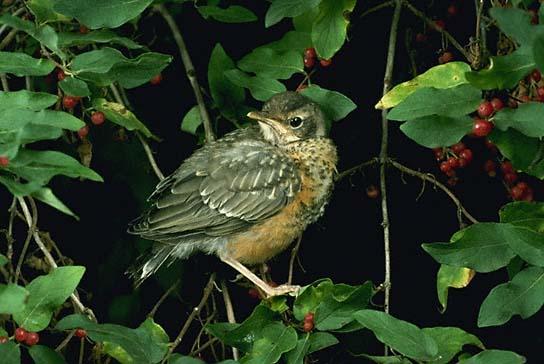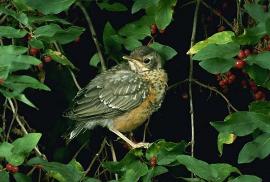Guide to Boreal Birds
Overview
Robins originally nested in forests; where they still do so they are much shyer than the robins of the dooryard. They breed only rarely in the Deep South, where they prefer large shade trees on lawns. Although considered a harbinger of spring, robins often winter in the northern states, where they frequent cedar bogs and swamps and are not usually noticed by a casual observer, except when they gather in large roosts, often containing thousands of birds. The mainstay of the American Robin is earthworms. It hunts on lawns, standing stock-still with head cocked to one side as though listening for its prey but actually discovering it by sight. The Robin is also the state bird of Connecticut, Michigan, and Wisconsin.
Description
9-11" (23-28 cm). Gray above, brick red below. Head and tail black in males, dull gray in females. Young birds are spotted below.
Voice
Song is a series of rich caroling notes, rising and falling in pitch: cheer-up, cheerily, cheer-up, cheerily.
Nesting
3-5 blue-green eggs in a well-made cup of mud reinforced with grass and twigs, lined with softer grasses, and placed in a tree or on a ledge or windowsill. Robins usually have 2 broods a season.
Habitat
Towns, gardens, open woodlands, and agricultural land.
Range/Migration
Breeds from Alaska east across continent to Newfoundland and south to California, Texas, Arkansas, and South Carolina. Winters north to British Columbia and Newfoundland.



